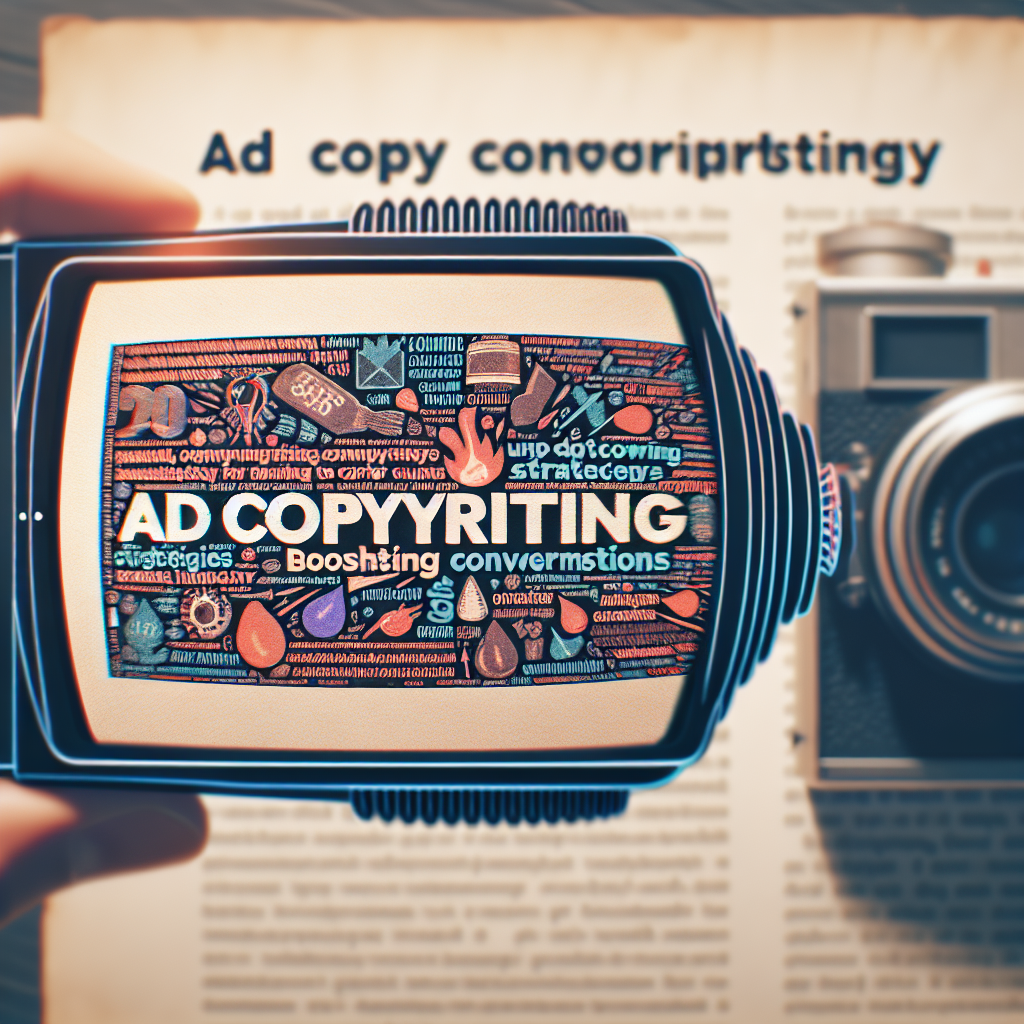
- Introduction to ad copywriting in 2025
- 1. Embracing Personalization in Your Ad Copy
- 2. Leveraging AI Tools for Copy Optimization
- 3. Crafting Compelling Headlines
- 4. Using Emotional Triggers Effectively
- 5. Incorporating Social Proof & Testimonials
- 6. Utilizing Storytelling Techniques
- 7. Focusing on Clear Call-to-Actions (CTAs)
- 8. Testing and Analyzing ad copy Performance
- 9. Mobile-First Copywriting Strategies
- 10. Writing for Voice Search and Virtual Assistants
Introduction to ad copywriting in 2025
Understanding the Evolution of ad copywriting
In 2025, ad copywriting has evolved beyond simple catchy slogans. Today, it is a data-driven, personalized art form that combines psychology, technology, and creativity to attract and convert audiences effectively. Staying up-to-date with the latest trends is crucial for marketers aiming to stand out in a crowded digital landscape.
According to recent research, over 70% of consumers prefer personalized ads that resonate with their interests. Hence, mastering ad copywriting that speaks directly to your target audience is more important than ever before. In this guide, we’ll explore the top strategies and insights to elevate your ad copywriting skills in 2025.
Effective ad copywriting is the backbone of successful advertising campaigns. It directly influences user engagement, click-through rates, and conversions, making it a skill every marketer must hone. Let’s begin our journey by examining these essential strategies.
1. Embracing Personalization in Your Ad Copy
Why personalization matters in 2025
Personalization continues to be a dominant trend in ad copywriting, especially in 2025. Consumers expect brands to understand their needs and preferences, which makes personalized messaging essential. Personalized ad copy shows that you value your audience’s individuality, leading to increased trust and engagement.
Data indicates that personalized ads are 50% more likely to result in conversions. This emphasizes the importance of using dynamic content and audience segmentation. For example, a clothing brand might tailor its ads based on browsing history and purchase behavior, showcasing relevant styles and offers.
To implement effective personalization, businesses need to leverage customer data responsibly while respecting privacy. Utilize tools like CRM systems and AI-powered analytics to craft personalized messages that resonate deeply with different customer segments.
Practical tips for personalized ad copywriting
Start by collecting comprehensive data through surveys, website analytics, and social media insights. Use this data to segment your audience into meaningful groups. Then, craft tailored messages that address each segment's pain points and aspirations.
For example, an ad targeting first-time buyers could emphasize ease of purchase and introductory discounts, while returning customers might receive messaging about loyalty rewards. Personalization makes your ad copy more relevant and compelling, increasing the chances of conversion.
Remember, even in 2025, authenticity is key. Avoid overly generic copy. Instead, aim for genuine, relatable messaging that feels tailored specifically to each viewer.
2. Leveraging AI Tools for Copy Optimization
The rise of AI in ad copywriting
In 2025, artificial intelligence has become indispensable for creating, testing, and refining ad copy. AI tools now analyze vast amounts of data to generate copy variations, suggest improvements, and predict performance outcomes. This innovation helps marketers save time and increase effectiveness.

Platforms like ChatGPT, Jasper, and Copy.ai enable ad writers to produce engaging headlines and compelling narratives quickly, while also ensuring they adhere to best practices and SEO guidelines—including the optimal use of the keyword phrase 'ad copywriting.'
AI-driven analytics also allow real-time testing, so you can identify which versions of your ad copy outperform others instantly. This continuous optimization process is crucial for remaining competitive in the fast-paced digital advertising environment of 2025.
Steps to integrate AI tools into your ad copywriting workflow
- Research and select reputable AI copywriting platforms that suit your needs and budget.
- Feed the AI with your target keywords, audience data, and campaign goals.
- Generate multiple copy variations and test them across different ad channels.
- Use analytics to identify top-performing copy and iteratively improve your messaging.
By embracing AI tools, you can create highly targeted ad copy that adapts to consumer preferences dynamically, ultimately boosting conversions in 2025 and beyond.
Conclusion
Mastering ad copywriting in 2025 requires a blend of creativity, data-driven personalization, and technological innovation. As we've explored in this guide, embracing new trends—such as AI optimization, storytelling, emotional triggers, and mobile-first strategies—can significantly enhance your advertising results.
Remember, your success in advertising hinges on crafting compelling, targeted copy that resonates with your audience. By applying these expert strategies to your ad copywriting efforts, you can achieve higher conversions, improved engagement, and a stronger brand presence in 2025 and the years to come.
Frequently Asked Questions
1. What is ad copywriting?
Ad copywriting is the art of crafting persuasive and engaging text for advertisements across various platforms. Its goal is to attract attention, generate interest, and encourage the audience to take action, such as clicking a link or making a purchase.
2. How can I improve my ad copywriting skills?
To improve, study successful ads, understand your audience’s needs, and practice writing regularly. Using tools like AI for testing and gaining feedback can also accelerate your learning process. Staying informed about current trends and techniques is crucial.
3. Why is personalization important in ad copywriting?
Personalization makes your ads more relevant and resonates better with viewers. It increases engagement and conversion rates by addressing individual preferences, behaviors, and needs, which are especially vital in 2025's competitive digital environment.
4. Are AI tools essential for ad copywriting in 2025?
While not mandatory, AI tools significantly enhance efficiency and effectiveness. They allow for rapid generation, testing, and optimization of ad copy, helping marketers stay ahead in a fast-paced landscape.
5. How do I measure the success of my ad copywriting efforts?
Track key metrics such as click-through rate (CTR), conversion rate, engagement, and return on ad spend (ROAS). A/B testing different copy versions can also provide insights into what resonates best with your audience.

https://linkupsocialmedia.com/ad-copywriting/?fsp_sid=3947


No comments:
Post a Comment